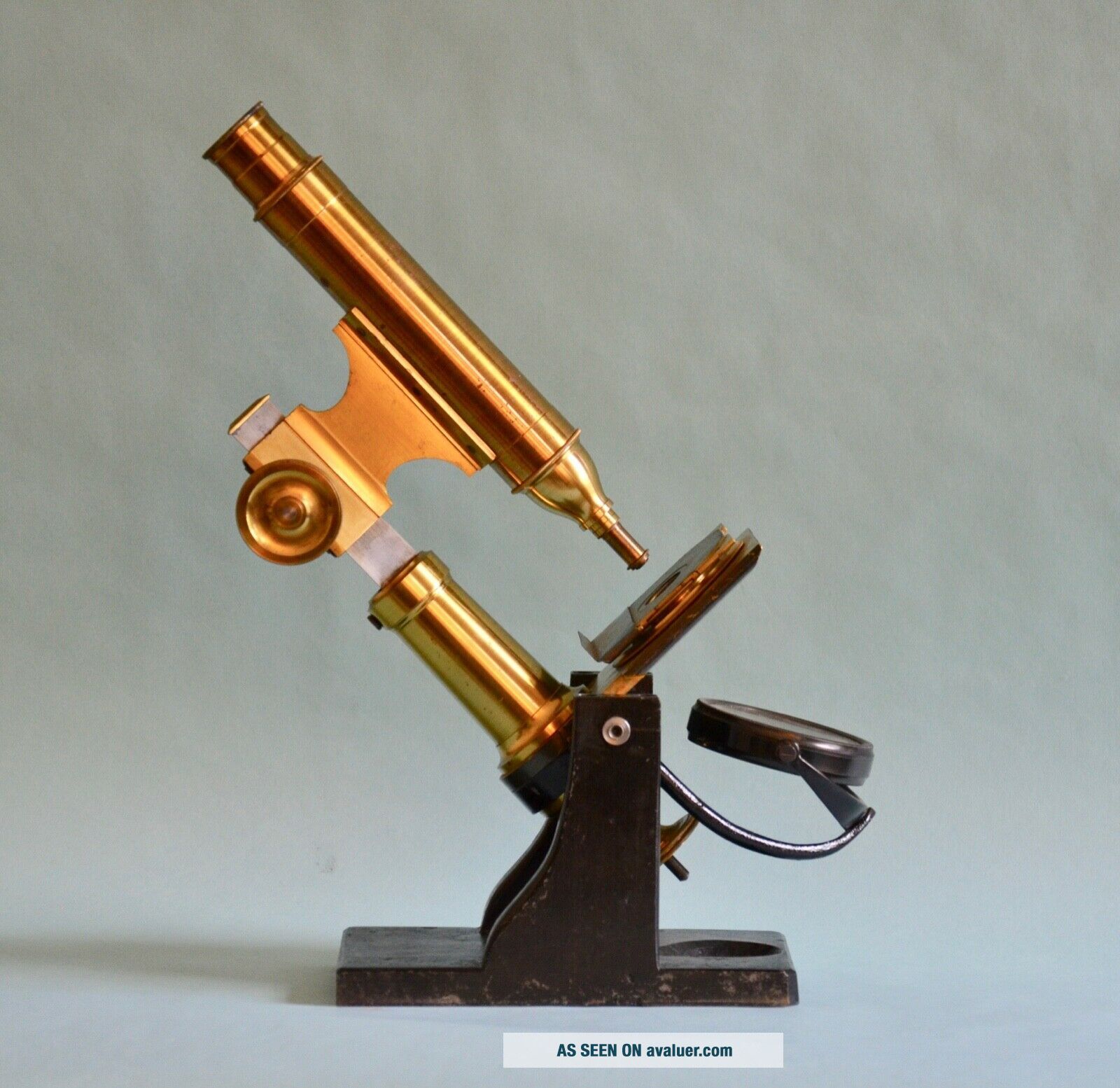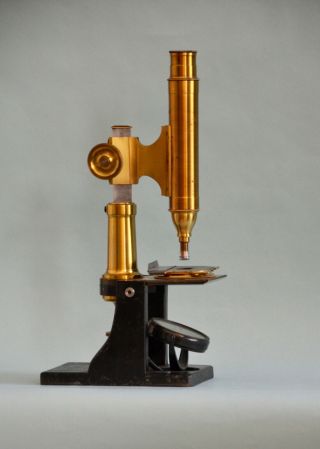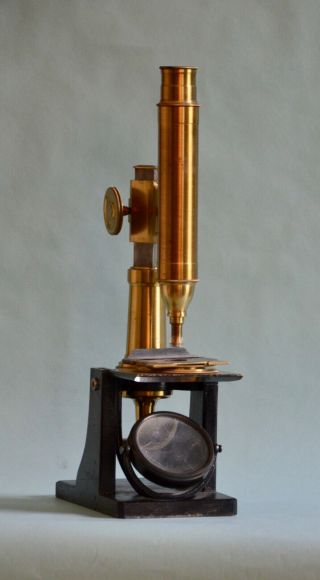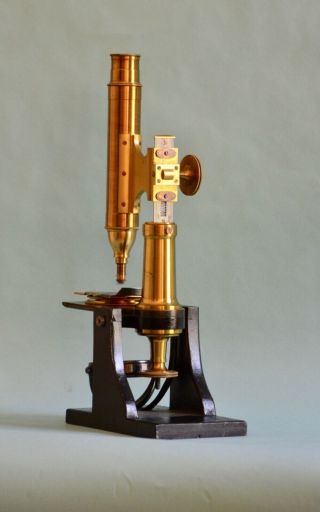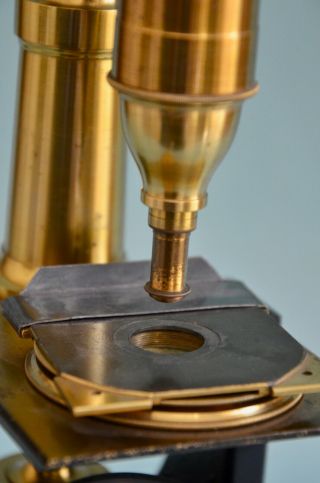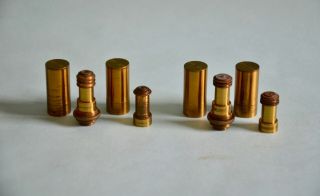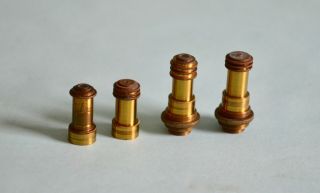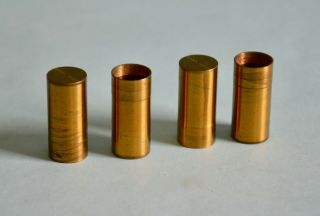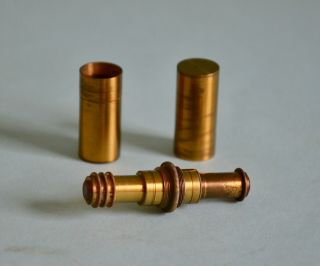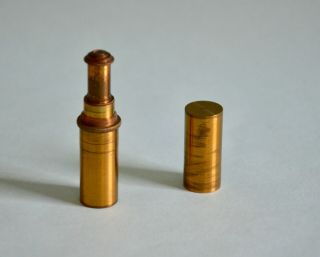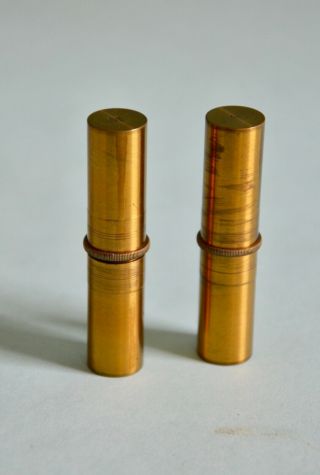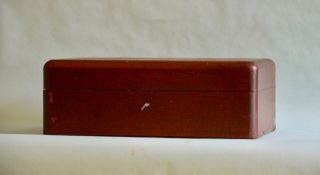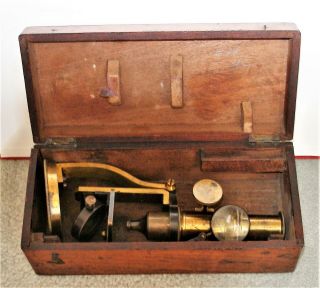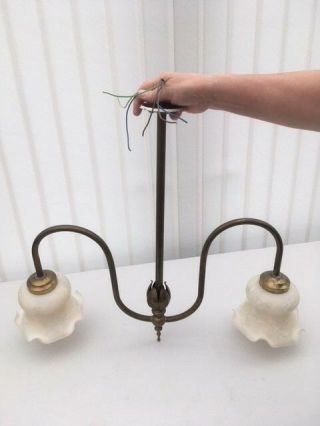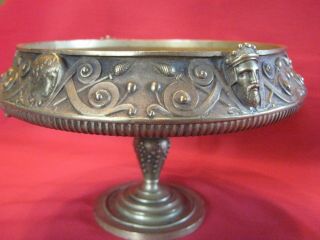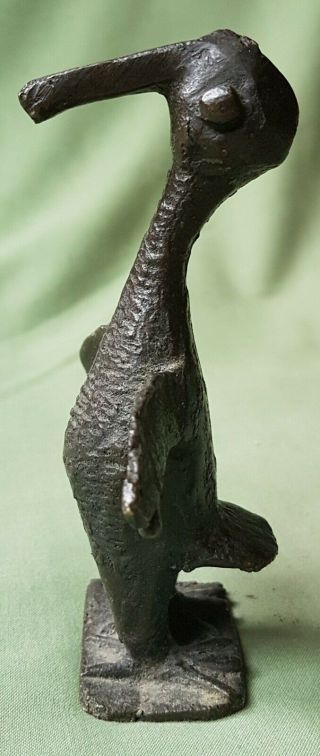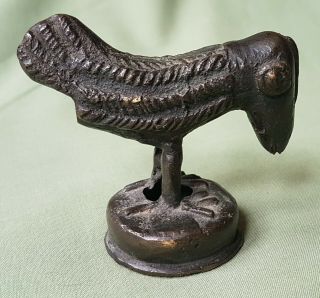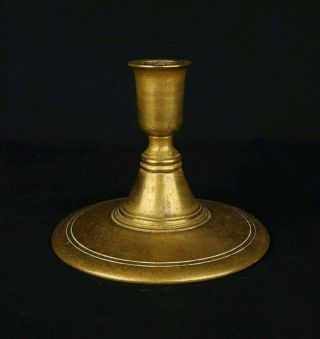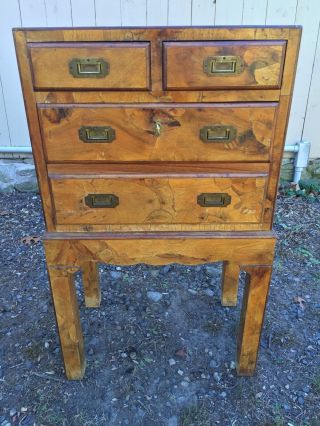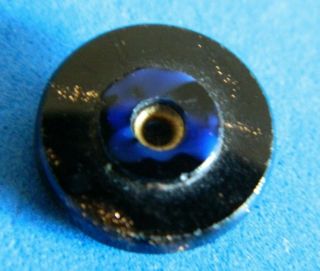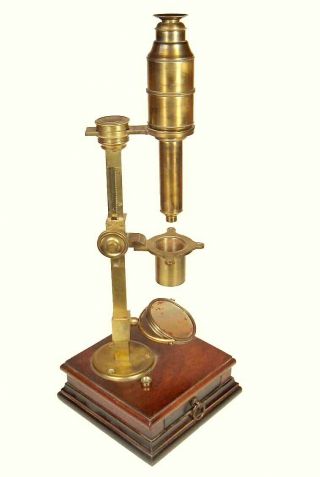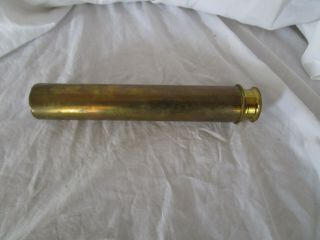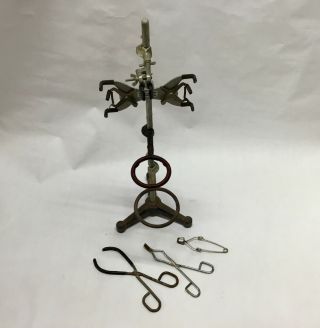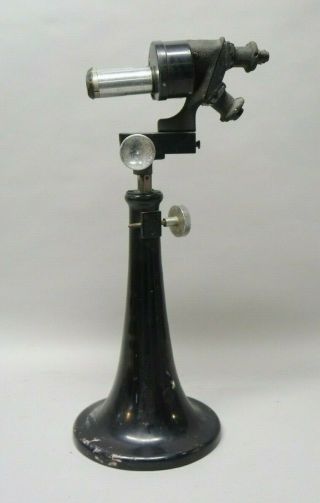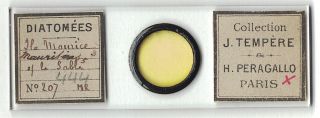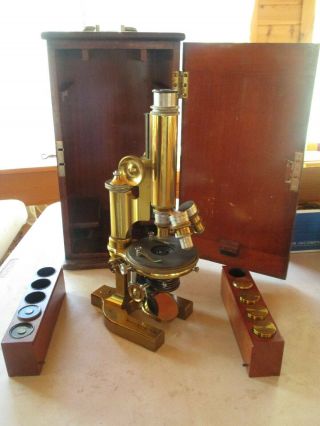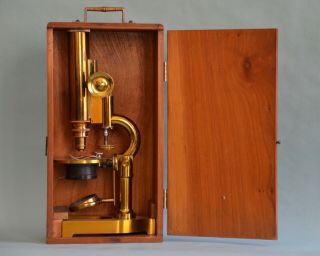BRASS MICROSCOPE OF UNUSUAL DESIGN (POSSIBLY FRENCHBY SELLIGUE CA 1825)
Item History & Price
| Reference Number: Avaluer:106622 | Maker: Probably Selligue |
| Original/Reproduction: Original |
The base of this microscope is an unusually heavy rectangular piece of cast iron measuring 9.8 cm in width, 16.5 cm in length, and 1.3 cm in thickness. Two pillars arise from the base and form a single piece with it. Two inclination joints are unique in design as each clamps a short prong coming from the stage. Two sets of screws regulate the pressure on the inclination joints. There i...s a small hole drilled between the pressure screws, apparently for oiling the joint – also an uncommon feature. The large, fork-mounted, plan-convex mirror is 5.8 cm in diameter; it is supported by a J-shaped tailpiece (picture 1) - another distinctive feature of this instrument. The lower portion of the pillar projects underneath the stage; the fine-focus knob is located at the end of it. The stage is 8.8 cm wide and 6.7 cm deep; it has a set of circular sliding plates that allow for movement of the slide (picture 5). Two segments form the limb; the lower one has a circular profile and receives into it the upper segment, which has a triangular profile. Coarse focus is achieved by a rack and pinion device controlled by a knob located on the right side of the microscope (pictures 1 and 2). A short, flat arm holds the 19 cm- long body tube. The microscope is provided with two eyepieces and four objectives; there are no inscriptions on any of them. The nosepiece is distinctive in its elongated shape; it supports a single objective. The four objectives have barrels of unusually small diameter; none carries any inscription. They can be identified by the number of rings engraved on the upper portion of their barrels (pictures 6 and 7). OPTICAL PERFORMANCE: The fact that each of the four objectives is divisible and that they can be used with any of two eyepieces provides an unusually wide range of magnifications. The image quality ranges from good to very good for such an old instrument. The wooden box measures 38.4 cm in length, 11 cm in depth, and 14.3 cm in high; it is solidly built and it retains its original, functioning, lock and key. There is a brass eyepiece with a very long barrel and a screw-in filter covering the top lens. This filter is exceptionally dark (for use in a solar microscope?). This unusual eyepiece does not fit the body tube but it was found in the case and it is included in this offering and so is a magnifier mounted on a wooden ring also found inside the case. The four objectives can be stored into two brass canisters (pictures 8, 9, 10, and 11). This is achieved by means of a very unique and ingenious design: first, a pair of objectives are screwed into the back of each other (picture 9), then the bottom of a canister is attached to one of the barrel objective using threads located there for that purpose (picture 10). Finally, the top of the canister is similarly attached to the barrel of the top objective (picture 11). (Personal note: In decades of microscope collecting I haven’t seen a similar design in any microscope.) CONDITION: This almost two centuries old instrument is in very good antique condition. The metal components show patina commeasured with their age. The lenses show a few minute flaws that do not affect the image; the same applies to some dark lines on the metallic coating of the mirrors.
PROVENANCE: This was microscope #400 in the del Cerro Collection. The collector kept it for his cabinet after the bulk of the Collection was donated to the National Museum of Medicine, Silver Spring, MD.
REFERENCES: 1)Archinard, Margarida:Microscopes. Images du Musee d’Art et d’Histoire de Geneve, 1976, shows a “Microscope achromatique de Selligue”, #14, from 1824. Features of that instrument resemble those in this microscope. Archinard notes that Selligue was the anagram of Alexander François Gilles (1784-1845), who originally was in association with Vincent Chevalier and his son Charles. A dispute with the Chevaliers ended Selligue’s short career as a microscope maker, this may explain why so few Selligue microscopes exist. 2)Neil, Robert M.: Microscopy in the Service of Man, Home University Library Series. Williams & Norgate, Ltd., London, undated, but circa 1923, p. 246, credits Selligue with being one of the pioneers in the development of the achromatic microscope. 3)A microscope by Selligue (dated ca. 1825) was offered in 1997 in the American antique market; several of its features resembled those of the present microscope. 4)Moe, Harald: The Story of the Microscope. Rhodos, 2004, p. 126, shows a diagrammatic drawing of an 1824 Selligue’s microscope. The instrument, with tripod base, is of a design different to the one offered here, but the nosepiece and the objective are similar. The same comment applies to a “microscope de Selligue” in the Jeroen Meensen Collection.
COMMENT: This is a microscope from the early apochromatic era, unusual in its design and its completeness; a true museum piece. The cost of shipping is dictated by the unusual weight of the microscope and its wooden box.



